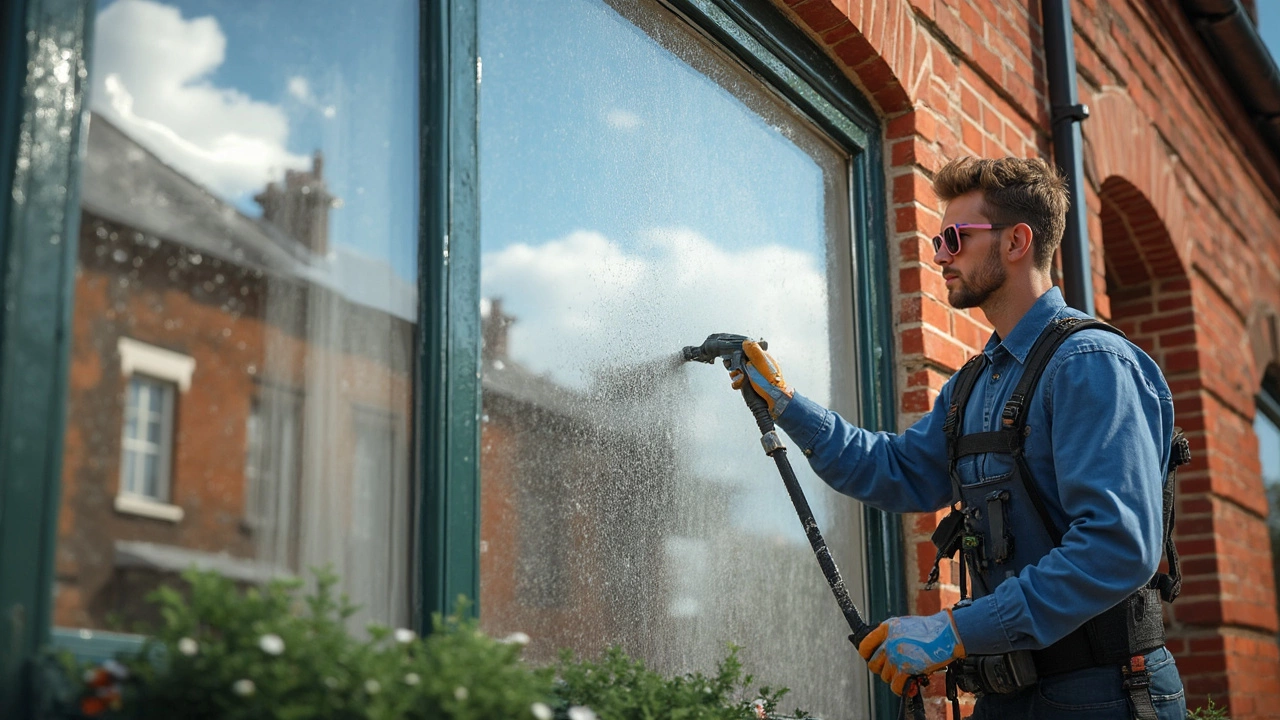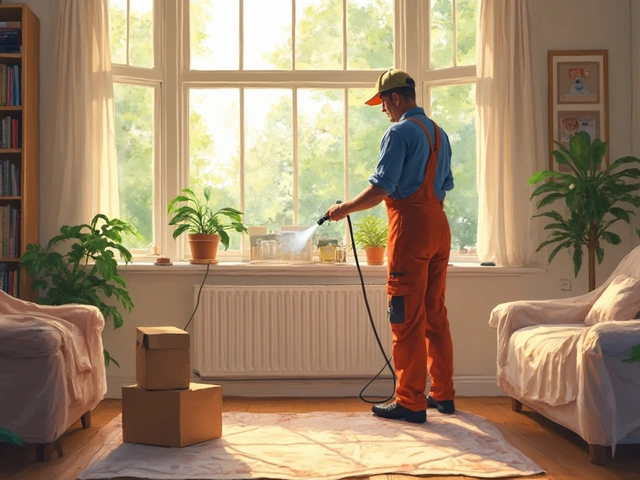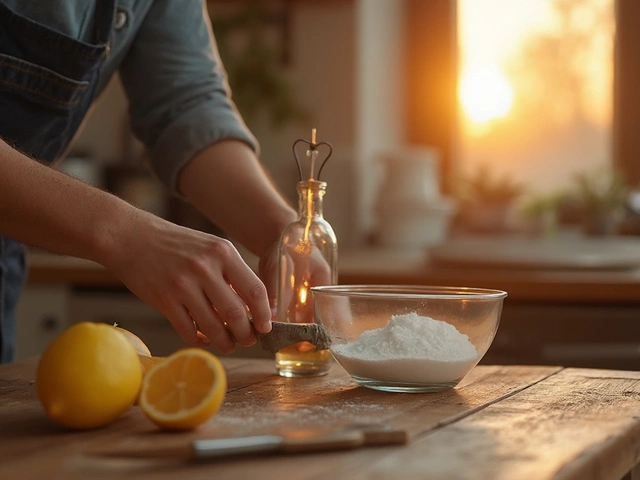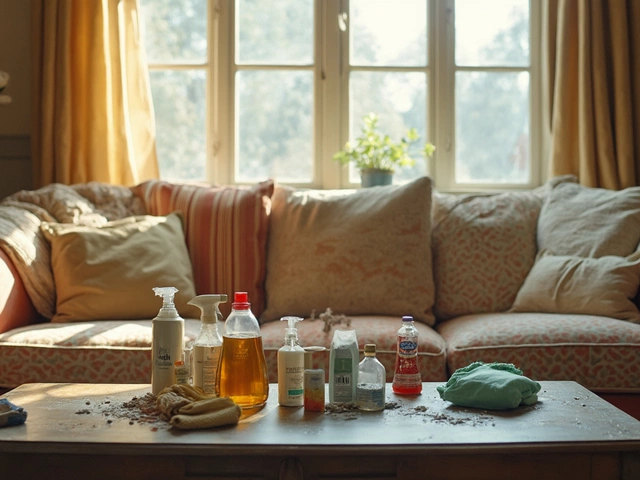Ever looked at a perfectly clean window and thought, what's the secret sauce? Turns out, it’s more than elbow grease and tap water. Professional window cleaners have a few tricks up their sleeves, and the solutions they use are an essential piece of the puzzle.
Usually, a professional window cleaning solution isn't just water. There are additives involved, each playing a crucial role. Detergents, for instance, break down grime while giving surfaces a slight abrasion to nudge away stubborn spots. Then, there are water softeners added to tackle hard water issues—nothing like reducing those pesky mineral deposits that lead to water spots!
- The Magic Mix of Professional Cleaners
- Common Ingredients and Their Functions
- Tools of the Trade
- DIY Tips for Home Cleaning
The Magic Mix of Professional Cleaners
At the heart of every professional's toolkit lies a window cleaning formula that transforms how we tackle grime. The most common ingredient is water, of course, but it's not your regular tap water. Often, cleaners use deionized water, which has all its minerals removed, preventing spots and streaks on the glass.
Why deionized water? Because minerals in hard water can lead to unsightly residue once the water dries – an absolute no-no for achieving crystal-clear windows.
Key Ingredients
Besides using deionized water, there are several other components professionals might mix in:
- Detergents: These help break down and remove dirt. A little goes a long way, as too much can leave a soapy film.
- Vinegar: Often added to the mix for its natural grease-cutting ability, making it easier to buff out smudges.
- Ammonia: Used for a high shine and extra cleaning power, especially on exterior windows plagued by weather-related residue.
- Isopropyl Alcohol: Some cleaners add this for faster evaporation, avoiding water spots.
What's in the Toolbox?
Apart from the liquid concoctions, you'd typically find tools like squeegees, scrubbers, and microfiber cloths in a professional window cleaner's arsenal. These tools are crucial in ensuring that no streaks remain after washing.
Do-It-Yourself Potential
If you're thinking of emulating these professionals at home, you can create a simple mix using water, white vinegar, and a splash of dish soap. Experiment with proportions that work best for your windows, and you'll be surprised at the result!
Interestingly, a 2022 study showed that households using a mix of vinegar and water saw up to a 50% reduction in streaks and smudges compared to those using just tap water. Though the professional cleaner's formula is tailored for quick, excellent results, a little DIY magic at home can go a long way too.
Common Ingredients and Their Functions
When it comes to professional window cleaning, the solution isn't just H2O. It's a well-thought-out mix that tackles different challenges head-on. Let's break down the main ingredients and how they work their magic.
Detergents
Detergents are the heavy lifters in any window cleaning solution. They cut through grease and grime with ease. Think of them as the soap part of the equation, ensuring all that built-up dirt and film melt away without much scrubbing.
Water Softeners
You might wonder why not just use regular water. Well, hard water can leave annoying spots on your windows due to minerals like calcium and magnesium. Enter water softeners. These additives help dissolve the minerals, reducing water spots and leaving your windows spotless.
Vinegar
Vinegar, a common household item, is sometimes used for its acidity. It balances the pH levels, enhancing the cleaning power, and can be particularly useful in cutting through hard water stains.
Isopropyl Alcohol
This ingredient is all about speed. It helps the cleaning solution dry faster, minimizing the chance of streaks. Professionals favor it especially on sunny days when quick drying is crucial to avoid those pesky lines.
Ammonia
Ammonia might sound intense, but it’s a staple for streak-free results. It evaporates quickly and is great for tackling fingerprints and other stubborn marks.
| Ingredient | Primary Function |
|---|---|
| Detergents | Dirt and grime removal |
| Water Softeners | Minimize water spots |
| Vinegar | Clean hard water stains |
| Isopropyl Alcohol | Quick drying |
| Ammonia | Streak-free shine |
Each of these components plays a vital role in professional solutions, making it more effective than what most of us have in our cleaning cupboard. By knowing what each ingredient does, you can mix up a DIY version or better appreciate the science behind those dazzling results.

Tools of the Trade
Professional window cleaners don’t just rely on magical cleaning mixtures; they use specific tools to get the job done efficiently. Let’s dive into what makes up their toolkit.
1. Squeegees
Perhaps the most iconic tool in a window cleaner’s arsenal, the squeegee is essential for removing water and soap from the glass, leaving a streak-free finish. Pros opt for high-quality rubber blades—uneven or cheap ones can lead to streaks.
2. Scrubbers or Washers
Before hitting the window with a squeegee, window cleaning experts often use a scrubber. This tool has a cloth head that soaks up water and detergent, making it easier to break up dirt and grime.
3. Water-Fed Pole and Pure Water Systems
For those tall windows, a water-fed pole is a godsend. These poles can extend several feet, allowing cleaners to remain safely on the ground. The brushes at the end scrub away dirt while the pole continuously feeds pure, de-ionized water onto the surface. The absence of minerals means no water spots.
4. Microfiber Cloths
These cloths are perfect for touching up any missed spots. Their fibers lift dirt without scratching, making them great for fixtures and window frames.
5. Belts and Holsters
Pros often carry belts designed to hold a squeegee, scrubber, and additional cleaning supplies. This setup keeps everything they need within arm's reach while working up high.
| Tool | Main Purpose |
|---|---|
| Squeegee | Removing water and soap |
| Scrubber | Breaking up dirt and grime |
| Water-Fed Pole | Reaching high places with pure water |
| Microfiber Cloths | Polishing and damage-free cleaning |
| Belts and Holsters | Organizing tools for convenience |
By using these tools, professional cleaners ensure even the dirtiest of windows end up sparkling clean. If you're tackling windows at home, consider adding some of these to your collection for professional results.
DIY Tips for Home Cleaning
Getting your windows to shine without calling in the pros? Totally doable. Here's how to tackle window cleaning at home and get it nearly professional-level spotless.
1. Mix Your Own Cleaning Solution
Forget fancy store-bought sprays. You can whip up an effective cleaning solution with a few household basics. Mix a gallon of water with a half-cup of vinegar and a few squirts of dish soap. The vinegar cuts through dirt, and the dish soap tackles grease.
2. Get the Right Tools
Tools matter. Invest in a squeegee, microfiber cloths, and a bucket. Microfiber is perfect for window maintenance as it won't leave fibers behind.
"The squeegee is the secret weapon for a genuinely professional finish," says cleaning expert Sarah Collins.
3. Don't Forget the Technique
The pros have a technique, and so should you. Start from the top and work your way down. Use the squeegee in a horizontal stroke, and wipe the blade with a clean cloth after each stroke to avoid streaks.
4. Check the Weather
Believe it or not, weather plays a role. A cloudy day is your ally. Sunlight can dry the solution too quickly, leading to streaks.
5. Regular Upkeep
Make it a habit to clean your windows every few months. Consistency is key in giving your home that extra sparkle and extending the life of your windows.
Ready to take on the challenge? With these tips, you’ll keep your windows looking pristine—or at least like they’ve had the attention of a professional cleaner. Try it and see if your view gets a little bit brighter.





